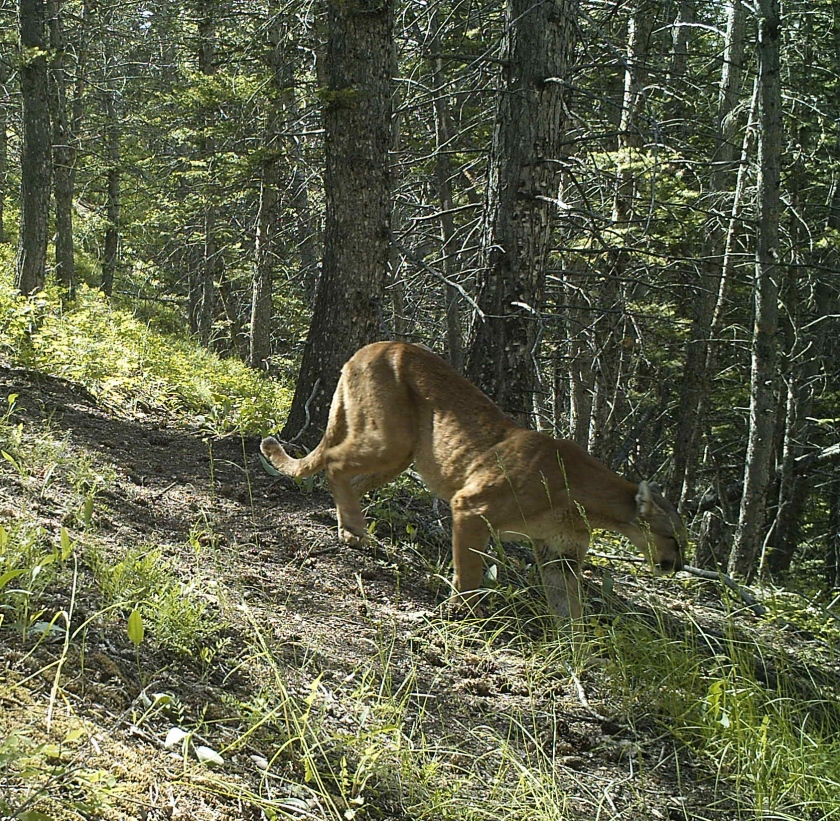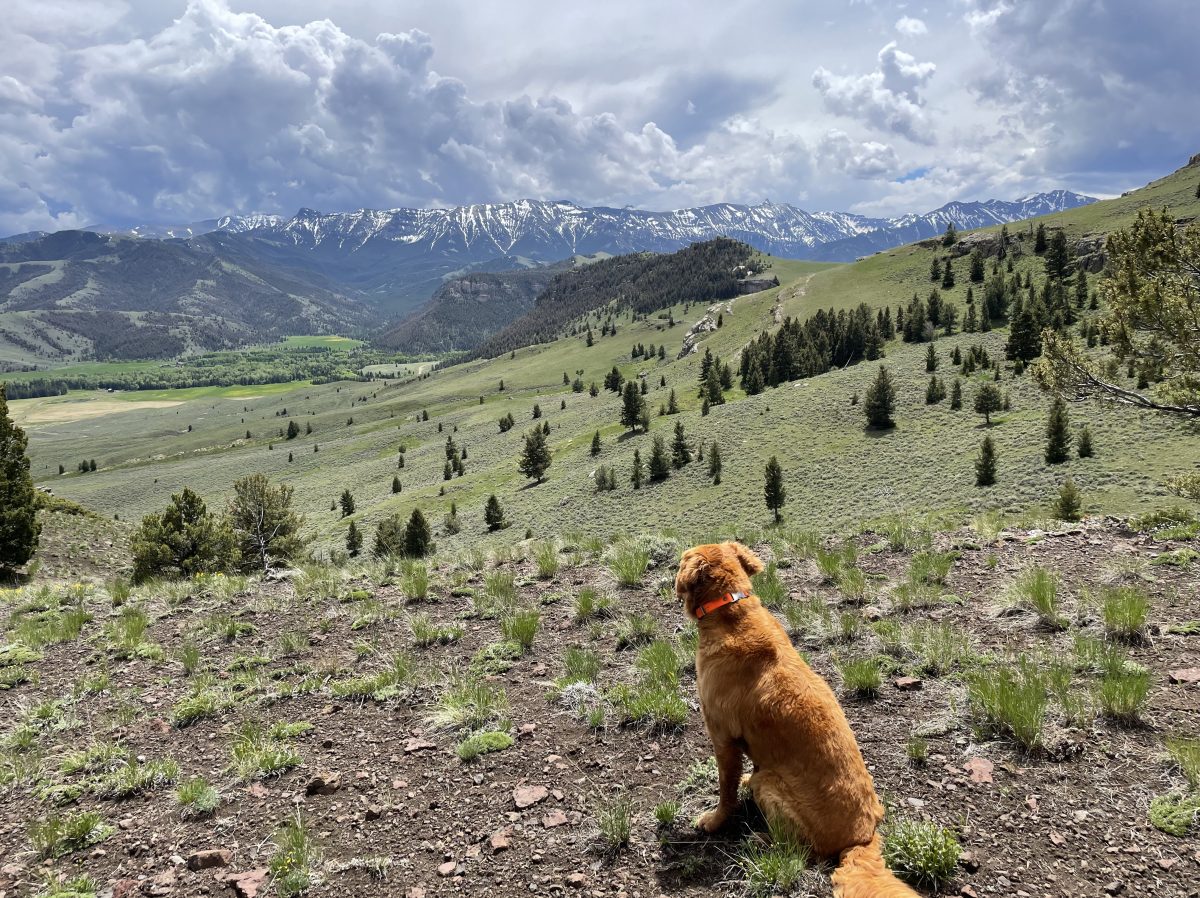In a quick trip to Dubois area to see friends visiting from California, I took one friend to the National Bighorn Sheep Interpretive Center. Dubois is the nearby town next to the Whiskey Mountain Sheep Preserve. Whiskey Mountain holds the most Rocky Mountain bighorn sheep in North America, over 1000. The Preserve is a seed population for sheep transplants all over the Rockies.
My friend is an outdoors person, avid hiker, and has been to the Rockies to backpack many times. And although she has seen bighorn sheep, like most people she knew little of their plight. The Center tells the story well, in pictures, of the dire situation bighorn sheep are in. As I’ve talked about before, bighorn sheep are susceptible to domestic sheep diseases when they co-mingle. Although it’s been over 150 years since domestic sheep grazing on the West, our native sheep just don’t have the immune systems to fight off these disease.
Consider this quote from Journal of a Trapper by Osborne Russell in 1835. Russell was in the Dunoir area, northwest of Dubois, in the Absarokas.
We left the stream and crossed the valley in a NE direction ascended a high point of mountain thickly covered with pines then descended over cliffs and crags crossing deep gulches among the dark forests of pines and logs until about noon…On the North and West were towering rocks several thousand feet high which seem to overhang this little vale–Thousands of mountain Sheep were scattered up and down feeding on the short grass which grew among the cliffs and crevices: some so high that it required a telescope to see them.

I saw no sheep in the Dunoir when I was there dayhiking.
After my friend left the Center, she had a poignant remark that got me thinking.
“It’s take so much effort and money just to maintain the wildlife we have today.”
Take the Sierra Nevada bighorn sheep for example. A wonderful documentary that won awards, available on the link here, is Counting Sheep: Restoring the Sierra Nevada Bighorn. The doc chronicles over twelve years the immense efforts to restore this tiny population (less than 300 at the time) of iconic bighorns. Successive transplants and removal of grazing domestic sheep worked for a while, but then cougars, who have always preyed on bighorns, moved in and the population began to dwindle. So the researchers approached the Cougar Network to enlist their help and support, as cougars are not allowed to be legally hunted in California. At first they resisted any cougar kills, but then they saw the situation and SURGICAL cougar kills, killing of cougars that were VERIFIED had killed sheep, was supported. Slowly the population is growing again.
This extreme disruption was initially caused by human predation and domestic sheep diseases–not by cougars kills. But now a lot of attention and management is needed just to begin to restore what once was. When I was in southern CA in the desert a few years ago, the bighorn sheep habitat was extremely endangered, not due to cougars, but to new housing developments.
“It’s take so much effort and money just to maintain the wildlife we have today.”
My friend’s statement applies to all of our wildlife today–predators especially, but in many areas, elk and deer as well.
When multiple use increases, so does conflict and disruption to wildlife. I wanted to visit the Dunoir because although it is considered a Special Management Area, snowmobiling and mountain biking still continue. This year the Shoshone National Forest will break out it’s 20 year plan. No new wilderness is being proposed. If the Dunoir were proposed for Wilderness (even though Congress still has to pass a new Wilderness Area), stricter rules would apply. This is prime grizzly bear habitat and elk calving grounds. Bears are highly disturbed by motorized and unmotorized use i.e. bicycles.
And my friend is correct; unfortunately it takes a lot of effort to just maintain what we have. Let’s put in that effort.

Western Dunoir area
One last note: You may have noticed my new book cover in the upper section of the blog pages. The book The Wild Excellence: Notes from Untamed America (Wordsworth Publishing) will be out this month in August and available directly from Amazon. It chronicles my move and wildlife adventures in this wild area, one of the last intact ecosystems in the temperate world. I’ll have more on this in later blog posts.

When we were visiting Catalina State Park near Tuscon last winter there was some information about the bighorn sheep there. In November of 2013, the Arizona Game and Fish Department released 31 Desert Bighorn Sheep into the Santa Catalina Mountains just north of Tucson. Most had been fitted with GPS collars to make keeping track of them easier. A number of them were soon killed by mountain lions. When we were there in Feb. a policy was in place to pursue and remove any lions that were known to be preying on the bighorns. At the time we were there, there were at least two ewes documented as having produced a lamb. Your article got me wondering how their reintroduction was going, so I googled it to find out http://www.catalinabighornrestoration.org/ As of August 3, 2014, 13 of the remaining collared sheep are known to be alive, though one of the collars may be malfunctioning. Sadly they have lost all but one of the rams. This seems like a pretty low success rate, but then it is a fairly new program. They are planning on a second release in the fall, including more rams. As you can imagine this is producing a controversy, as the program is very expensive, and there are folks who feel it isn’t worth the effort.
LikeLike
That is interesting. A great read on the Desert Bighorn is ‘Eating Stone’ by Ellen Melloy
LikeLike
Thanks for the book recommendation.
LikeLike